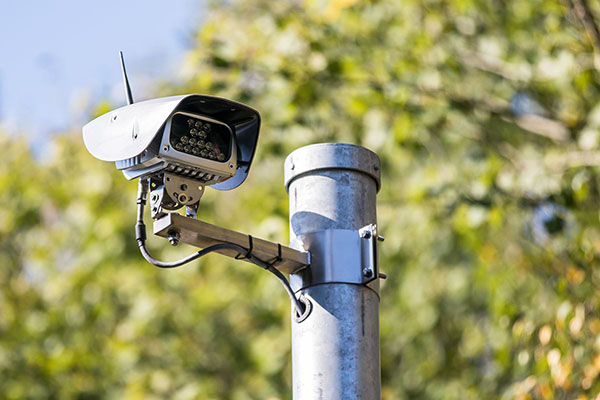Wellington will spend the summer preparing its first school zone speed cameras to go live with $100 fines on Thursday, Sept. 11 — and don’t get confused that the potential financial whammy applies only when yellow lights are flashing during drop-off and pick-up periods.
“Wellington’s going to do the whole [school] day?” asked Michael Arena, a member of Wellington’s Public Safety Committee, seeking clarification during a presentation on the cameras at a meeting held on Wednesday, June 11.
“That’s correct,” said Nicole Coates, Wellington’s director of emergency management and public safety.
Coates indicated that is what is allowed under a state law enabling the cameras, and it is the standard most municipalities use.
The flashing lights denote a lower speed limit, commonly 20 mph, when students are being let in or out, but the cameras will keep operating even when a higher speed limit kicks in between those times, she said.
“When school’s in session, it’s going to continue to enforce throughout the day,” Coates said.
The cameras set in motion the mailing of $100 fines to drivers for going at least 11 mph over the applicable speed limit at the time of the violation.
The cameras will operate at 11 Wellington schools where the village has authority to place the camera devices, including the Somerset Academy off Wellington Trace, a charter school. Palm Beach Central High School represents an exception because of jurisdictional complications with Forest Hill Blvd.
So, how many drivers are likely to get penalized? It’s possible to get a few hints.
A preliminary study over two weeks in the spring at two Wellington school zones found 543 vehicles travelling at least 11 mph over the limit, with 108 of those moving between 41 mph and 60 mph and 11 greater than 60 mph.
Extrapolate that over 11 schools, and it suggests as many as 3,000 fines in the first half month alone.
The actual number is likely to be lower. That depends in part on an educational campaign by way of village web sites, flyers, newsletters and social media leading up to live deployment, plus a 30-day period starting Aug. 11 in which the cameras operate but will issue warnings, not actual fines.
“If there’s a violator, they will receive a warning in the mail, notifying them of the speed they were going,” explained Hassan Dabaja, business development manager for the camera vendor that the village selected, Jenoptik North America, which does business as Jenoptik Smart Mobility Solutions LLC.
Once live fines start going out, violators will have 30 days to either pay the cost or contest it, typically through a hearing before a village magistrate.
From educational efforts to warnings to the first fines, the cumulative effect is likely to start getting through to drivers, officials said.
“In other municipalities you’ve done this for, have you seen a reduction in speeding in school zones?” Committee Chair Michael Weil asked.
“Absolutely,” Dabaja said. “Within 60 to 90 days, you start seeing a gradual decrease in speeding. Some schools may take a little bit longer than that.”
The cameras will go live a half hour before the school day, starting with breakfast, and continue until half an hour after the standard session for any given school. For example, that means fines are possible from 7 a.m. to 2:25 p.m. at Binks Forest Elementary School, according to a list of enforcement hours shown at the meeting. Not all schools keep identical hours. The fine enforcement period runs from 8:30 a.m. to 4:30 p.m. at Emerald Cove Middle School, for example.
The Wellington Village Council voted 5-0 in April to select Jenoptik as its camera vendor after staff members scored and ranked half a dozen companies. The cameras cost the village nothing in advance, as the vendor installs the cameras, mails the fines and takes a cut of the proceeds.








